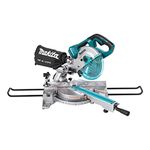
Synopsis: The blades vary, the graphics differ; some have toggle locks, while others use a slide. This article takes a close look at options in 25-ft. tape measures and offers some tips for using them.
I bet I go through five measuring tapes a year. It’s a fact of life for a finish carpenter who uses a tape measure dozens of times every day. When my tape breaks or wears out, I usually tell the guy running out for coffee to get me one of those 25-footers with the silver case. But it turns out there’s a good reason to be a little more discerning.
After reviewing a dozen tape measures for this article, I’ve learned that there are more manufacturers than just Stanley and Lufkin, and that the tapes themselves vary considerably, from the blade graphics to the feel of the case in my hand.
Tape locks: buttons or levers?
One of the key features to consider is how the tape locks. You either lock the blade with your thumb using a slide button or toggle, or you lock the blade with your fingers compressing a lever. Slide buttons are by far the most common option, but a close cousin is the toggle found on Lufkin and Lawson tapes.
The travel distance of the buttons varies. U.S. Tape Company’s Pro-Tape Carpenter’s Tape had the smoothest-operating slide lock of the group with the shortest travel. The toggle lock, as on the Lufkin ProSeries, was more convenient and comfortable than a slide, but it did not seem to lock the blade as firmly as the slide lock.
With the third type of lock, squeezing the lever allows the blade to extend or retract. Releasing the lever locks the blade. The biggest advantage of this type of locking mechanism is being able to feather or brake the blade as it retracts to prevent the hook from being damaged as it slides back into the housing. Stanley and Craftsman manufacture models with squeeze-lever locks. Stanley’s LeverLock tape has a button that disables the lever so that the blade can move freely without a squeeze of the lever.
It’s the blades and hooks that count
The best overall length for working on or around houses is 25 ft. Longer retractable tapes are available (up to 35 ft.), but the longer the tape, the heavier it is. And extra weight isn’t something most folks want in a tool belt that they wear all day. Besides being able to measure most things in most houses, most 25-footers come with cases small enough for the average hand.
Arguably the most important part of a tape measure is the blade. After all, without all those numbers, how could you record a measurement? But not all tape blades are created equal.
The blades themselves are made of thin steel concave in section. The curved shape keeps the blade straight and stiff when extended. After the tapes are printed, manufacturers add a protective coating to the blade, usually nylon, acrylic, or Mylar.
For more photos and details, click the View PDF button below:
Fine Homebuilding Recommended Products
Fine Homebuilding receives a commission for items purchased through links on this site, including Amazon Associates and other affiliate advertising programs.

Large-Capacity Lightweight Miter Saw

BOSCH Compact Router (PR20)

Get Your House Right: Architectural Elements to Use & Avoid

























